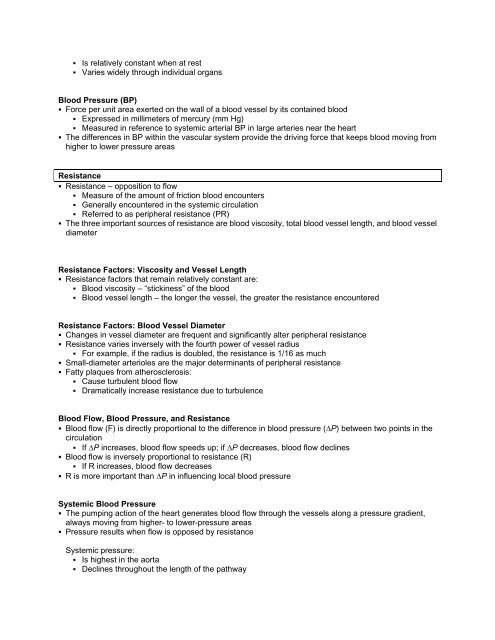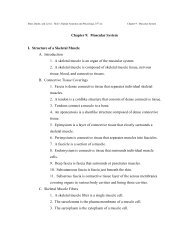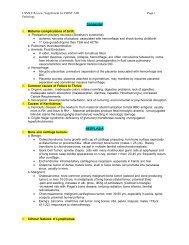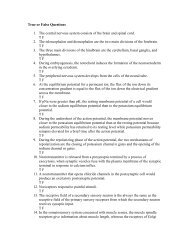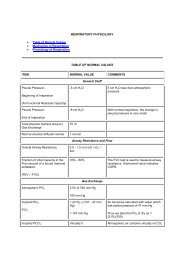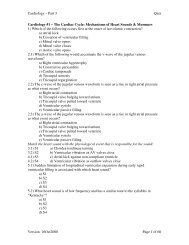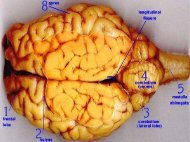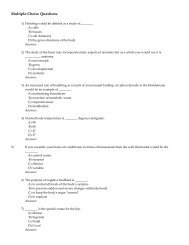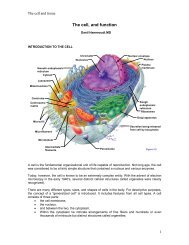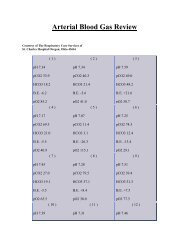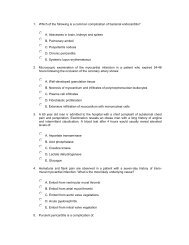Blood Vessels - Sinoe medical homepage.
Blood Vessels - Sinoe medical homepage.
Blood Vessels - Sinoe medical homepage.
You also want an ePaper? Increase the reach of your titles
YUMPU automatically turns print PDFs into web optimized ePapers that Google loves.
• Is relatively constant when at rest• Varies widely through individual organs<strong>Blood</strong> Pressure (BP)• Force per unit area exerted on the wall of a blood vessel by its contained blood• Expressed in millimeters of mercury (mm Hg)• Measured in reference to systemic arterial BP in large arteries near the heart• The differences in BP within the vascular system provide the driving force that keeps blood moving fromhigher to lower pressure areasResistance• Resistance – opposition to flow• Measure of the amount of friction blood encounters• Generally encountered in the systemic circulation• Referred to as peripheral resistance (PR)• The three important sources of resistance are blood viscosity, total blood vessel length, and blood vesseldiameterResistance Factors: Viscosity and Vessel Length• Resistance factors that remain relatively constant are:• <strong>Blood</strong> viscosity – “stickiness” of the blood• <strong>Blood</strong> vessel length – the longer the vessel, the greater the resistance encounteredResistance Factors: <strong>Blood</strong> Vessel Diameter• Changes in vessel diameter are frequent and significantly alter peripheral resistance• Resistance varies inversely with the fourth power of vessel radius• For example, if the radius is doubled, the resistance is 1/16 as much• Small-diameter arterioles are the major determinants of peripheral resistance• Fatty plaques from atherosclerosis:• Cause turbulent blood flow• Dramatically increase resistance due to turbulence<strong>Blood</strong> Flow, <strong>Blood</strong> Pressure, and Resistance• <strong>Blood</strong> flow (F) is directly proportional to the difference in blood pressure (ΔP) between two points in thecirculation• If ΔP increases, blood flow speeds up; if ΔP decreases, blood flow declines• <strong>Blood</strong> flow is inversely proportional to resistance (R)• If R increases, blood flow decreases• R is more important than ΔP in influencing local blood pressureSystemic <strong>Blood</strong> Pressure• The pumping action of the heart generates blood flow through the vessels along a pressure gradient,always moving from higher- to lower-pressure areas• Pressure results when flow is opposed by resistanceSystemic pressure:• Is highest in the aorta• Declines throughout the length of the pathway


